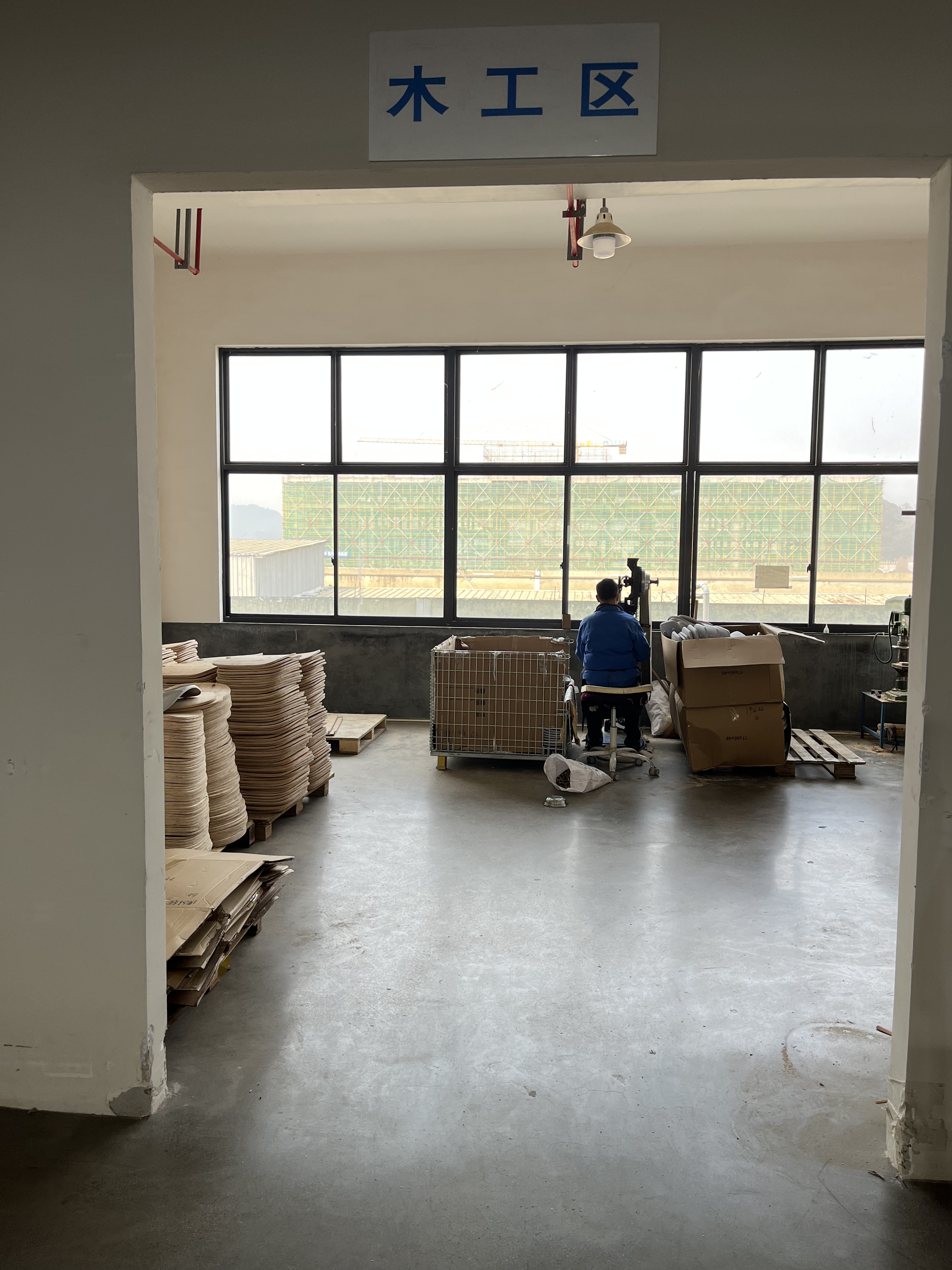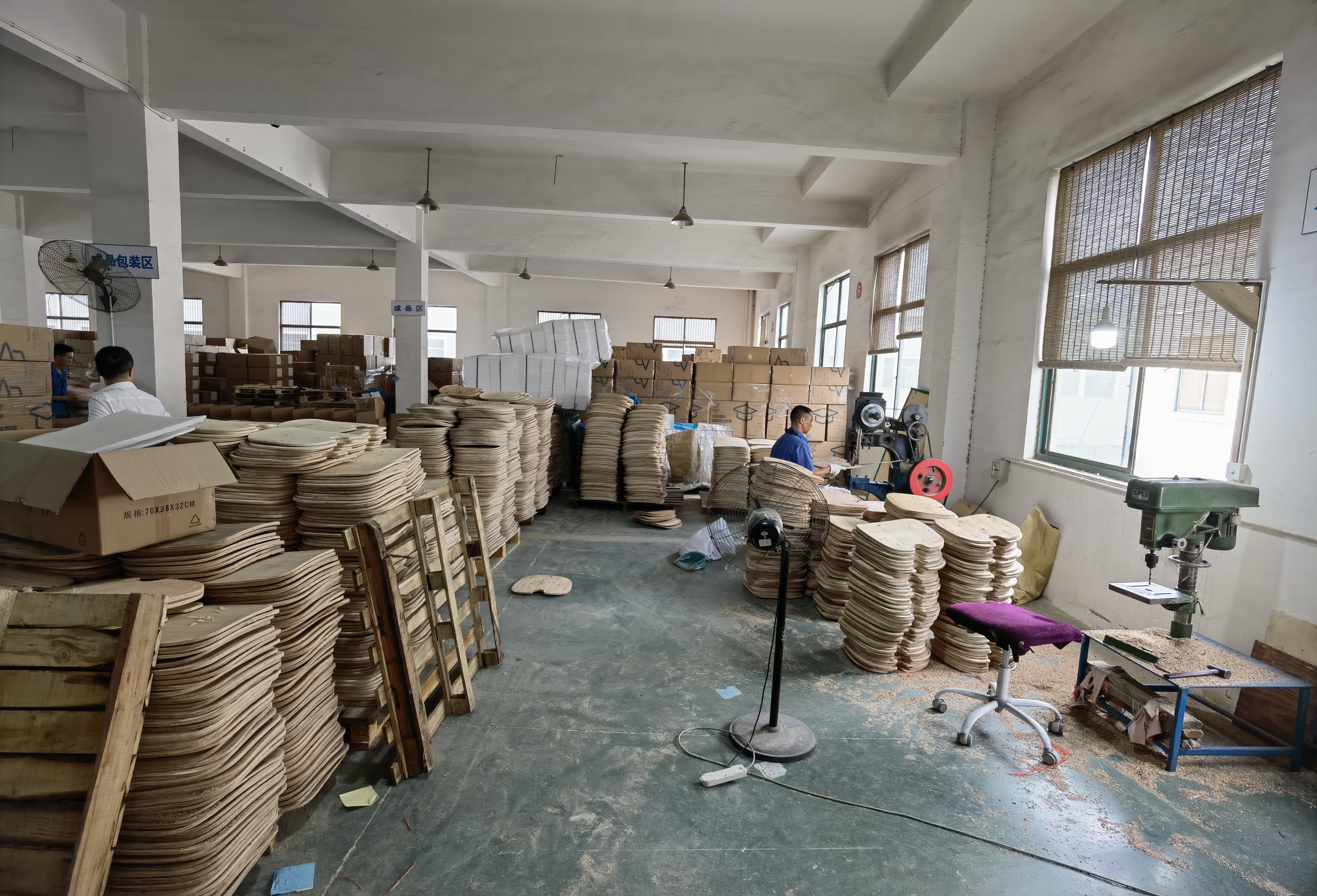For ergonomic seating board, usually crafted from plywood, this core supports the cushion, offering strength and durability while keeping costs down.
Let’s take a closer look at how high-quality plywood seat boards are made for study and office chairs
Step 1: Selection and Preparation of Plywood
For children’s study chairs, we commonly use plywood around 9mm thick—balancing lightweight properties with strength. Office chair seat boards, requiring higher weight capacity, usually adopt 15mm thickness for added durability.
Premium-grade plywood sheets are sourced, adhering to strict quality standards to ensure no warping, delamination, or voids.
Step 2: Precision Cutting
Using advanced CNC (Computer Numerical Control) machines or custom molds, the plywood sheets are accurately cut to the specific dimensions and ergonomic shapes required for various chair models. This precision guarantees a perfect fit between the wood base and the seat cushion design.
Step 3: Surface Sanding
Post cutting, each board undergoes meticulous sanding. This process smooths all edges and surfaces, preventing splinters and ensuring optimal bonding during the upholstery phase. Smoothness also enhances user comfort.
Step 4: Drilling and Pre-Inserting Screw Holes
We utilize specialized drilling equipment to create clean, accurately positioned holes for assembling hardware. Pre-drilled screw holes and mounting spots are established to streamline the final assembly process, ensuring stability and efficient downstream operations.
Step 5: Quality Inspection and Stacking
Every seat board is carefully inspected for defects. Then, the finished “semi-product” boards are neatly stacked in organized batches, awaiting integration into the cushion assembly line.
Later, skilled workers combine the plywood seat board with layers of sponge foam and upholstery fabric. The materials are stacked, wrapped, and tightly secured using pneumatic nail guns, creating robust and comfortable seat bases for assembly into the final chair frame.
Last but no least:
Plywood vs. Injection Molded (PP) Bases:
Plywood offers cost advantages over injection-molded polypropylene (PP) bases without sacrificing structural integrity, making it a preferred choice for both manufacturers and clients focused on value and quality.



